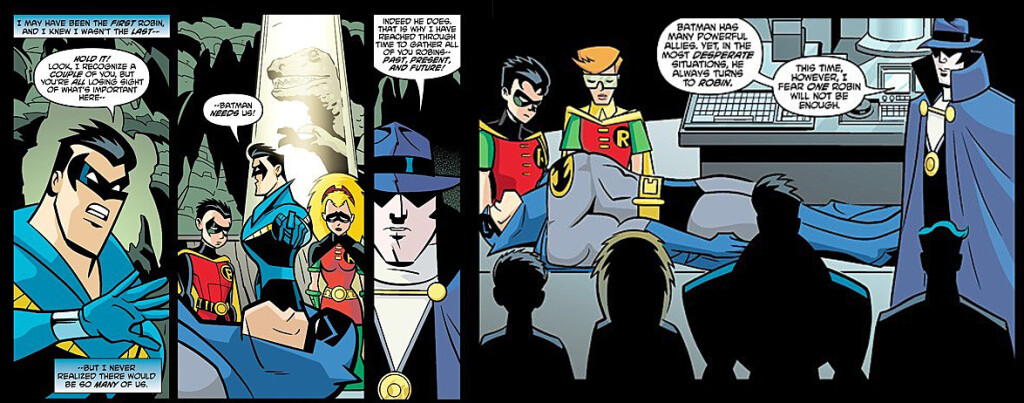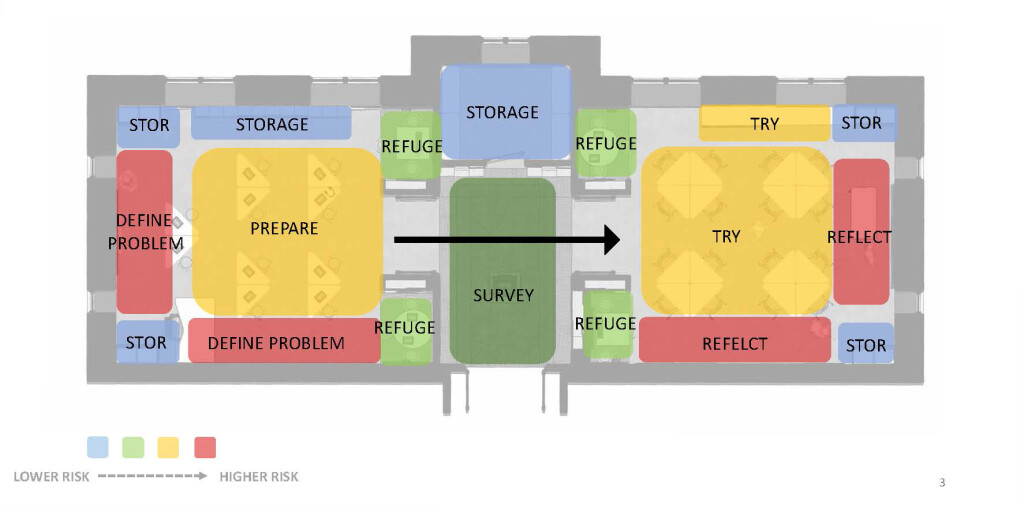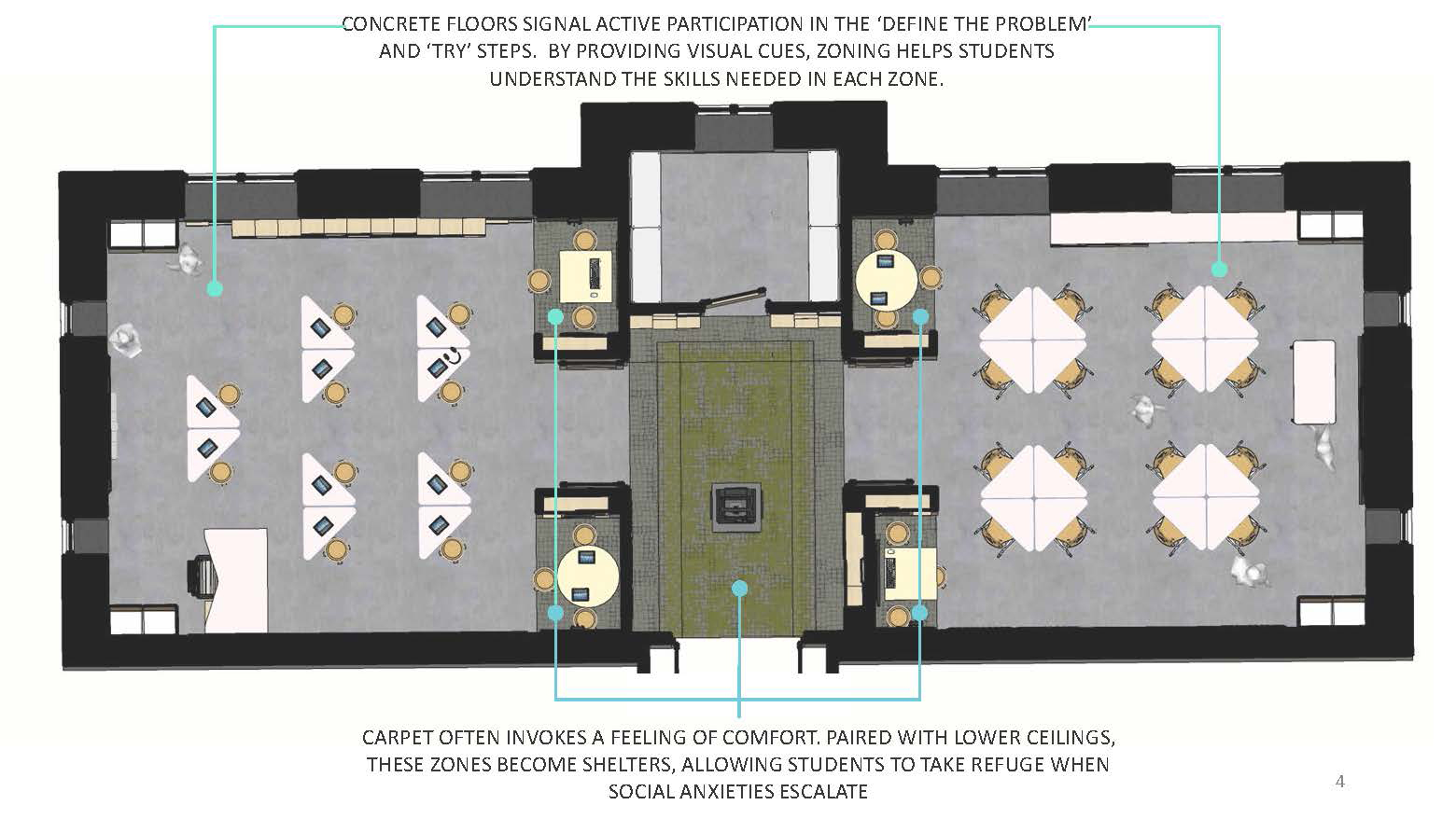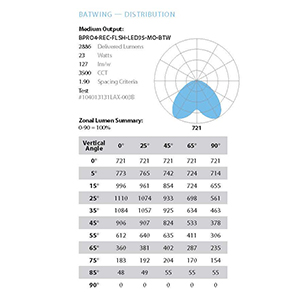What cultivates student success? Educators take the lead, but environment plays a vital supporting role –like a dynamic duo. Paired together, instructors and their classrooms are education’s Batman and Robin. When a global pandemic disbands the duo, students, and weary parents long for their reunion. With that time finally in sight, it is clearer than ever why teachers need their classrooms.
Educators strive for greater engagement in their students, augmented by intentional learning space design. While curriculum identifies which skills should be learned, classroom environment shapes ability to learn. Each student learns differently, but studying behavior reveals patterned responses to the environment. By understanding and mapping these behavioral responses, or ‘risks’ to learning, we can illuminate new design possibilities for student engagement.
The study of human behavior is a fascinatingly broad topic, so this post will focus on three of five elements that most influence learning: physical, sensory, and social. These three areas impact a student’s ability to absorb, process, and respond to environmental stimuli. What presents exciting new challenges for designers is the growing acceptance of classroom neurodiversity. Neurodiversity posits that varying brain functions and behavioral traits are part of a normal, natural variation in the human population (Stanford University Project). Diagnosing ADHD, Autism Spectrum Disorder, Dyslexia, and other learning differences helps educators understand students’ learning ‘styles’. Although research on learning styles is inconclusive, many people identify with a certain way of learning. Whether visual, auditory, experiential, or other, variety is already acknowledged and accepted. Neurodiversity simply broadens this definition of normal.
Throughout Batman’s history, many different people fill the role of Robin. Each possesses unique skills that complement Batman’s in varying ways. The first Robin, Dick Grayson, is arguably the most friendly and outgoing, balancing out Batman’s brooding nature. Whereas Tim Drake is calm under pressure and able to objectively analyze situations. Although short-lived, Stephanie Brown brings a tenacious spirit, ready for battle. And like his father, Damian Wayne is stubborn, smart, and a capable fighter. Each is different, none are deficit.
Recognizing natural learning variations challenges routine design thinking in favor of more inclusive environments. By doing so, we can select design elements that support physical, sensory, and social behaviors across the spectrum.
The Acrobat’s Moves
Dick Grayson grew up in a family of acrobats, learning to move effortlessly. As Robin, this skill allowed him to out-pace his opponents.
Physical behavior informs movement. One way to enhance intuitive navigation through space is with zoning. By setting up a clear order to each space, students can intuitively understand which activity takes place. For the design of a new Makerspace at Kennedy Krieger High School, a school for students on the Autism spectrum, we at Mackey Mitchell Architects worked closely with KKHS educators to align curriculum with design. We began with the four-step ‘scientific process’ approach used in KKHS’s Makerspace curriculum: Define the Problem, Prepare, Try, and Reflect. This process became our zoning guide.
By clearly defining each step in the process as a zone, students have a spatial map of the skills needed to define, prepare, try, or reflect. These zones can be reinforced with changes in flooring type, lighting, furniture, paint colors, and other elements. The ‘Define the Problem’ and ‘Try’ zones, which both have concrete floors, are divided by a carpeted ‘Survey’, or transition zone. This transition in flooring signals to students that a change in skill is needed, and gives a visual cue to prepare for the next step of the project.
The Detective Sense
Tim Drake was not chosen to be the next Robin for his acrobatic skill. What Batman did see, were unmatched abilities to examine environments for clues and detect criminals.
Sensory behavior engages surrounding. Any design element that affects the senses influences sensory inputs. These include materials, lighting, acoustics, temperature, and even smells. Careful selection will go unnoticed, but careless selection can distract. For instance, task lights illuminating work surfaces require the correct brightness level and color temperature to support visual comprehension or fine motor work. At Magnolia Speech School, our goal was to select lighting that reduced facial shadows. Because the students have speech and/or hearing impairments, many rely on lip reading, sign language, or other forms of visual communication. We studied several light throw diagrams and selected one with a ‘bat wing’ pattern for its horizontal, rather than downward, light cast. This drastically reduced facial shadows and allowed appropriate contrast levels for clarity while keeping our design intent.
The Social Leader
At 10 years old, Damian Wayne becomes the leader of a new team of Teen Titans. He may have kidnapped them to do it, but at least the youngest Robin brings them together for the greater good…right?
Social behavior forms relationships. Design for social behavior, the way students interact with their peers and teachers, requires extra care. This is especially true of active, collaborative learning spaces. Successful collaboration can and should take place in many forms. While one large active learning space is often the norm, offering variety is indispensable, especially for students who feel uneasy when interacting. At Kennedy Krieger, we incorporated a mix of seating options. Two individual ‘refuge’ zones were added to the ‘Try’ zone, allowing some students to work individually or with an instructor. Another area had tables with two or three seats to encourage small group work. These smaller tables could also flex to form seating for larger groups of five or six. These options encourage students to learn the nuances of collaboration in any setting, but also provide refuge for students who might need to first observe and process an activity before joining.
How can we turn an understanding of behavior into a repeatable process? While working with KKHS, we have begun to quantify the elements of behavior to produce a graphic representation of risk. Through this new ‘Risk Mapping’ process, we identify physical, social, and sensory risks and display them like heat maps overlayed onto a floor plan. Because risks are unique to each student, we look to educators for guidance. With the best understanding of their learners’ needs, instructors can help identify anxiety-causing spaces, leading to tailored designs for any student group. In a second blog post, we will more fully explore this process and the benefit ‘Risk Mapping’ brings to learning space design.
Educators can teach virtually. The pandemic has proven this possible, but at a price. At a high cost on engagement, efficiency, and enjoyment. Just as students thrive in the right environment, so do instructors. For example, zoning can remind and encourage teachers to adjust their teaching styles as much as it guides students. If teachers measure their own success by their students’ (something I think most educators would agree with), and behavior-influenced classrooms can facilitate greater engagement, then both student and teacher can enjoy more success, more often. The more efficiently students learn, the greater the opportunity for teachers to impact additional learners.
Batman and Robin continuously evolve. They have to. Each situation introduces new adversaries, forcing the dynamic duo to adapt or risk crime-fighting failure. Educators and classrooms must do the same, with designers well postured to challenge the status quo. This pandemic encouraged a deeper exploration of behavior-led design. We have built upon our understanding of human behavior and are creating a repeatable process that can be tailored to any school or student group. By comprehending physical, sensory, and social anxieties, we can improve engagement and design better classrooms. Students with a broader spectrum of ability deserve to learn, in their own normal, natural way. The resulting classroom designs can make learning less ‘risky’, more equitable, and greater fun. Learners depend on a strong and brilliant Batman. To be truly effective, Education also needs Robin.

 By: Stephanie Shepard
By: Stephanie Shepard 



